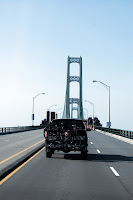The book is out there on the shelf at your local bookstore. It is number sixteen on the list of bestselling military history on Amazon. If it is not recalled, it becomes part of the historical record. Historians almost always base their works on the secondary sources created previously. It is quite possible that twenty years from now, a writer might find this book and cite something from it, and perpetuate the fabrications it contains. The fact that the book does not cite any sources and the author admits that it contains fabrications, makes suspect the remainder of its contents. I will not purchase or read this book.
As a historian, my ire is directed at the author, Charles Pelligrino, and his publisher. This entire episode could have been avoided with some simple fact checking and review of primary sources. When the author was interviewing Mr. Fuoco, how hard would it have been to look at his discharge or other documents like award certificates? Did the author not make a trip to the National Archives or other repositories to view the official records like flight plans and passenger lists? We do not know because there is no list of sources in Mr. Pelligrino’s book. Moreover, the most distasteful part is that Pelligrino has been published previously (albeit this is his first history book) and had a movie made based on one of his earlier books. Not only should an author of his experience know better, but he also has the financial wherewithal to easily conduct primary source research and fact checking.
I don’t want to tell you how to think or who to blame. Make up your own mind. I’m just going to give you my opinion, my philosophy if you will. I believe that the job of the nonfiction writer, whether an academic or a popular historian, is to honor those who came before us by telling their story so it is not lost to history. The recollections and eyewitness accounts of individuals are an integral part of telling that story. However, the absolute primary function of the interviewer is to check the validity of a claim before publishing it as fact.
As far as we veterans are concerned, I know this in my heart to be true. I think that however you got there; circumstances make the hero. You might have joined or you might have been drafted. You might have volunteered for Special Forces, or prayed for the Finance Corps. Nevertheless, fate, kismet, or karma put you in the line of fire or it didn’t. You either witnessed history, or wish you had, and it wasn’t totally up to you, no matter how hard you tried either way. That being said, anyone who steps forward and signs up, no matter what their role, should be thanked for their service and their courage should never be in question. Not by anyone else, and certainly not by themselves.














